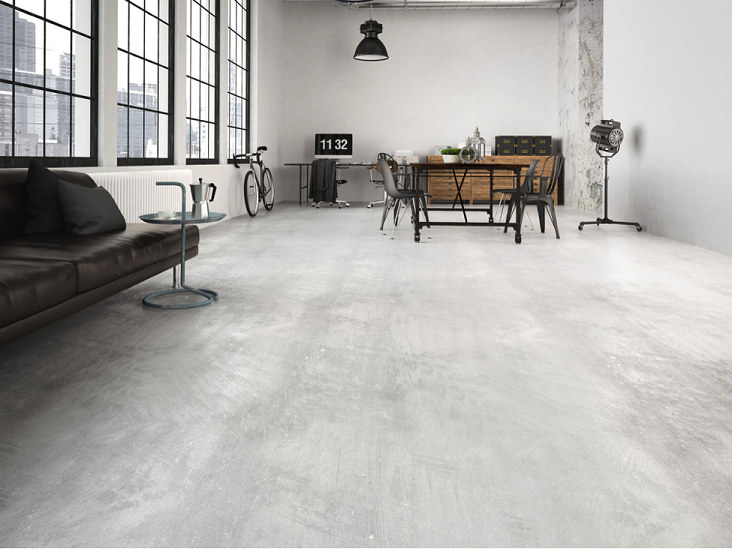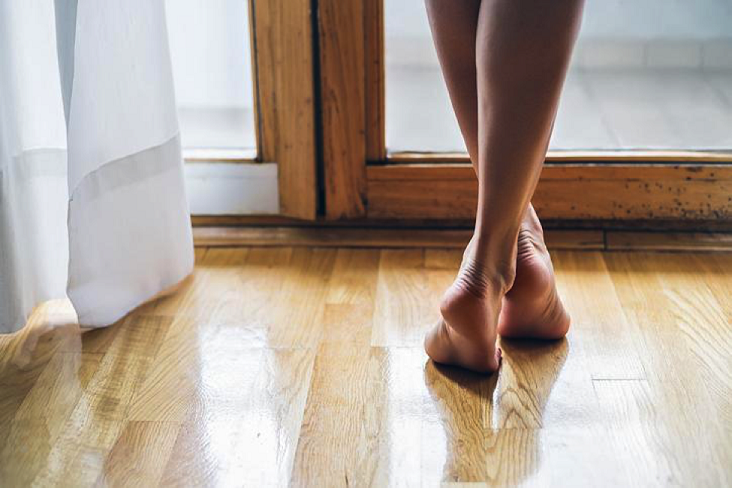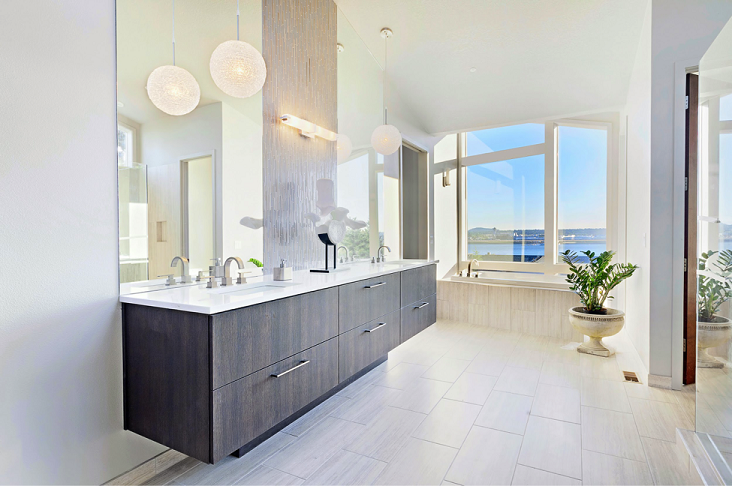Apartments come in all shapes and sizes—and with all kinds of flooring, too. According to studies, almost one in four renters never gets their security deposit back, and real or perceived damage to floors is often one of the reasons building managers use to hold onto deposits. Meanwhile, a floor’s appearance, durability, and ability to insulate your space all add to its overall appeal and comfort. Here are some of the most popular materials you’ll find in apartments today, and what they mean for your rental life for the next twelve months.
Carpeting: the Secret Insulator
On one hand, old-fashioned apartment managers love to go for the cheap stuff here, and then charge you a steep cleaning fee for that one teensy spot you accidentally missed. Meanwhile, carpet can hold dust, pet hair, and other allergens left by the previous tenant—stuff that can make your life miserable if you’re sensitive to air quality. On the other hand, it can provide some much-needed insulation, especially if you live in a region with cold winters. According to some sources, carpeted floors have three to seven times the insulation of hardwood, and up to 17 times as much insulating power as ceramic tile floors. If you’re keen on the warmth that a carpet can add, consider laying down mats or runners in high-traffic areas to keep the carpeting there looking fresh and springy.
 Concrete: A Modern Choice
Concrete: A Modern Choice
Concrete floors are some of the most versatile around. With a wide range of stains, stamps, and etchings, there’s no end to what can be done with them—and they’ve come back into fashion over the past ten or so years, making them a highly-sought-after choice in trendy urban apartments all over the country. If you tend to be kind of rough on the floors in your rentals, concrete makes one of the most durable, scratch-proof options. Unfortunately, I’ve seen this all fall apart when the management doesn’t install them properly. Specifically, I lived in one unit where the landlord had picked out the wrong stain—so pieces of it kept flaking off the whole time I was there. There was no amount of washing that could get that off my foam yoga mat, let me tell you.
Hardwood: What’s Your Damage?
Classic, elegant, and warm—finding an apartment with hardwood floors is definitely a score. Beyond the strictly cosmetic benefits, wood floors also provide adequate insulation, and they feel pretty nice underfoot. But the squeaking and cracking of an upstairs neighbors walking around is enough to practically drive some tenants crazy. In your own apartment, you can sweep a little talcum powder across the boards to silence squeaky boards. But that glass of wine you just knocked over? It will clean up fast on a hardwood floor. Keep an eye out for any signs of water damage or leaking pipes when you go to see the place, though. Besides being a renter’s worst nightmare, leaks can do a real number on those glistening oak floors. Wood and sustained moisture do not mix, so it can mess up the floors fast. Make sure to wipe up any spills or overflow from the shower right away, and tell your landlord if you have flooding or other water problems. Trust me, you don’t want to be left on the line for your building’s one-of-a-kind salvaged wood.
Wood Laminate: A More Practical Choice
Unless you’re looking in the historical district, most of the time you’ll be hard pressed to find real wood on the floors in any apartment. When a building owner wants the look of wood, they usually opt for a laminate made from melamine resin that’s fashioned to mimic the look and feel of the real thing. Don’t turn your nose up at it just yet, though—some modern laminate floors are detailed and realistic enough to fool even the most discerning eye. And some high-end products have a sophisticated, variegated look that will look very cool next to your trendy mid century-inspired sectional. Plus, it doesn’t scratch or stain as easily as wood. Just be sure to ask when it was installed—some older laminates don’t have a slip-resistant surface coat, so they can be slippery. Unless you’re planning on re-enacting that scene from Risky Business, you probably want something that offers a little more friction.
Vinyl Tile: If You Like the Retro Look
Peeling, curling, tacky, and cheap: vinyl tile doesn’t exactly net the most positive reviews from renters. While it can sometimes seem a little dated, in the right apartment, vinyl brings a quirky, kitschy feel to a space. And the newer stuff is super luxe, easily mimicking high-end materials like marble, wood, and ceramic. If you’re concerned about your apartment’s environmental impact, though, steer clear of anything installed before around 2010. A lot of these earlier tiles off-gas VOCs, a controversial chemical that’s been associated with asthma and cancer in some studies. Either way, though, you’ll have a super sturdy surface in your apartment that’s moisture- and stain-resistant—perfect for pets, kids, and the occasional turned-over glass.
Ceramic Tile: A World of Options
Move over subway tile—today’s ceramic tiles come in a dazzling array of sizes, shapes, and finishes. In luxury complexes, you might easily find long wood-look tiles with heavily-detailed grains, tiles painted to look like colored marble, or hexagonal patterned tiles in unique arrangements. Tile is no stranger to kitchens and bathrooms, but smooth tiles make a lovely surface for a living room, dining room, or even a bedroom. Just put down some accent rugs if you don’t like walking across a cold floor in the middle of the night—ceramic keeps its cool fairly well, which means it can get awfully chilly in the wintertime.
 Now that you know the ABCs of apartment flooring, it’s time to double check that lease agreement. Best of luck in your new home!
Now that you know the ABCs of apartment flooring, it’s time to double check that lease agreement. Best of luck in your new home!
The post The Ultimate Guide to Apartment Flooring appeared first on Apartment Living Blog.
from Apartment Living Blog https://www.forrent.com/blog/apt_life/ultimate-guide-apartment-flooring/
No comments:
Post a Comment